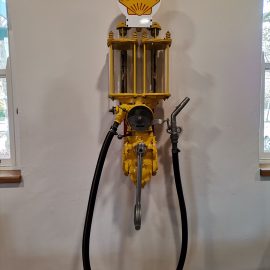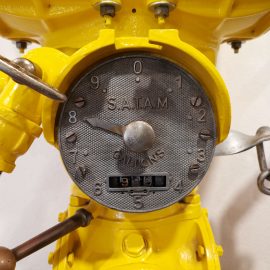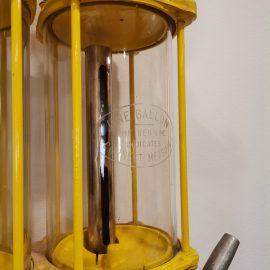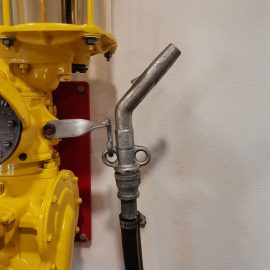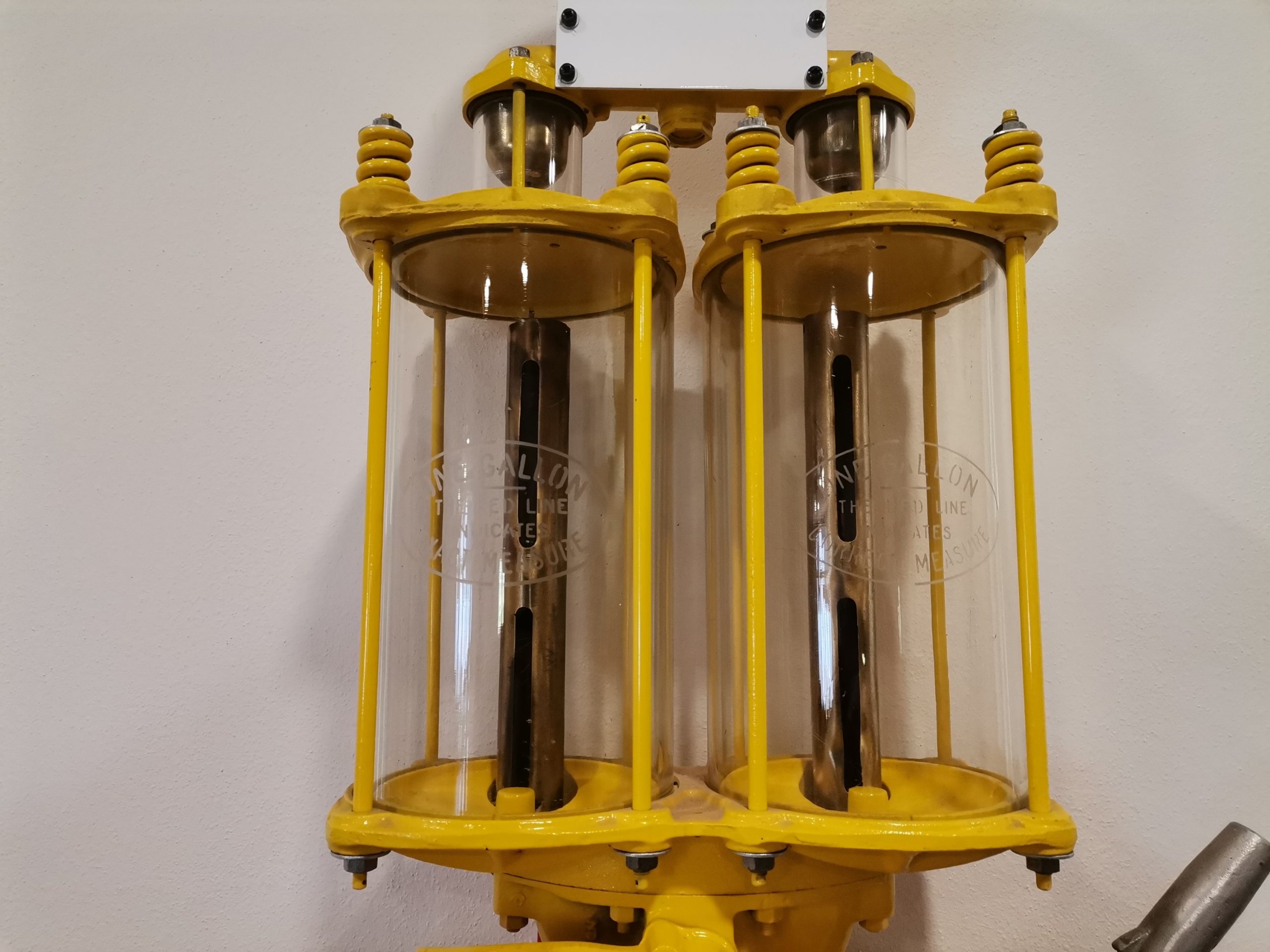
02 Oct Stories From the Stacks – Artefacts
A regular series about the museum’s motoring memorabilia, compiled and written by FMM’s Assistant Curator Sian Theron. This month, Sian looks at pump power…
While cars are commonplace in today’s society, so too are petrol stations and, in turn, petrol pumps. Petrol stations are an essential lifeline, without which transportation would grind to an immediate halt. Nowadays they are ubiquitous, to the point that, generally speaking, one doesn’t need to worry about where next to fill up.
But it was not always so. Pioneering South African motorists had to order fuel from America. It would be delivered in gallon drums on ships as deck cargo, making them the first items to be thrown overboard in inclement weather!
Eventually, the Vacuum Oil Company carried stock in Cape Town, and with the ongoing growth of vehicle owners the availability of fuel improved.
But how was fuel dispensed? Interestingly, the petrol pump was originally developed in 1885, prior to the birth of the motor car. Designed by American Sylvanus Bowser, the pump wasn’t made for petrol but rather for dispensing kerosene oil for lamps. The pump was hand operated and the fuel was initially gravity fed into five-gallon containers. Motorists would then fill their cars using funnels. Over time, many further developments were made to reach the modern version of the petrol pump we find on service station forecourts today.
FMM has a wonderful collection of old fuel pumps, and one of the best restored examples can be found in the museum’s Deli. It is a wall-mounted pump worked by hand cranking the fuel up into the glass measuring vials and then being dispensed by gravity feed directly into a motor vehicle through a hose and nozzle. The vials are marked with gallon measurements to show the volume being dispensed, as well as allowing the motorist to see the quality and clarity of the fuel.
The pump in the Deli adjoining the reception area is a SATAM model, circa-1930.




